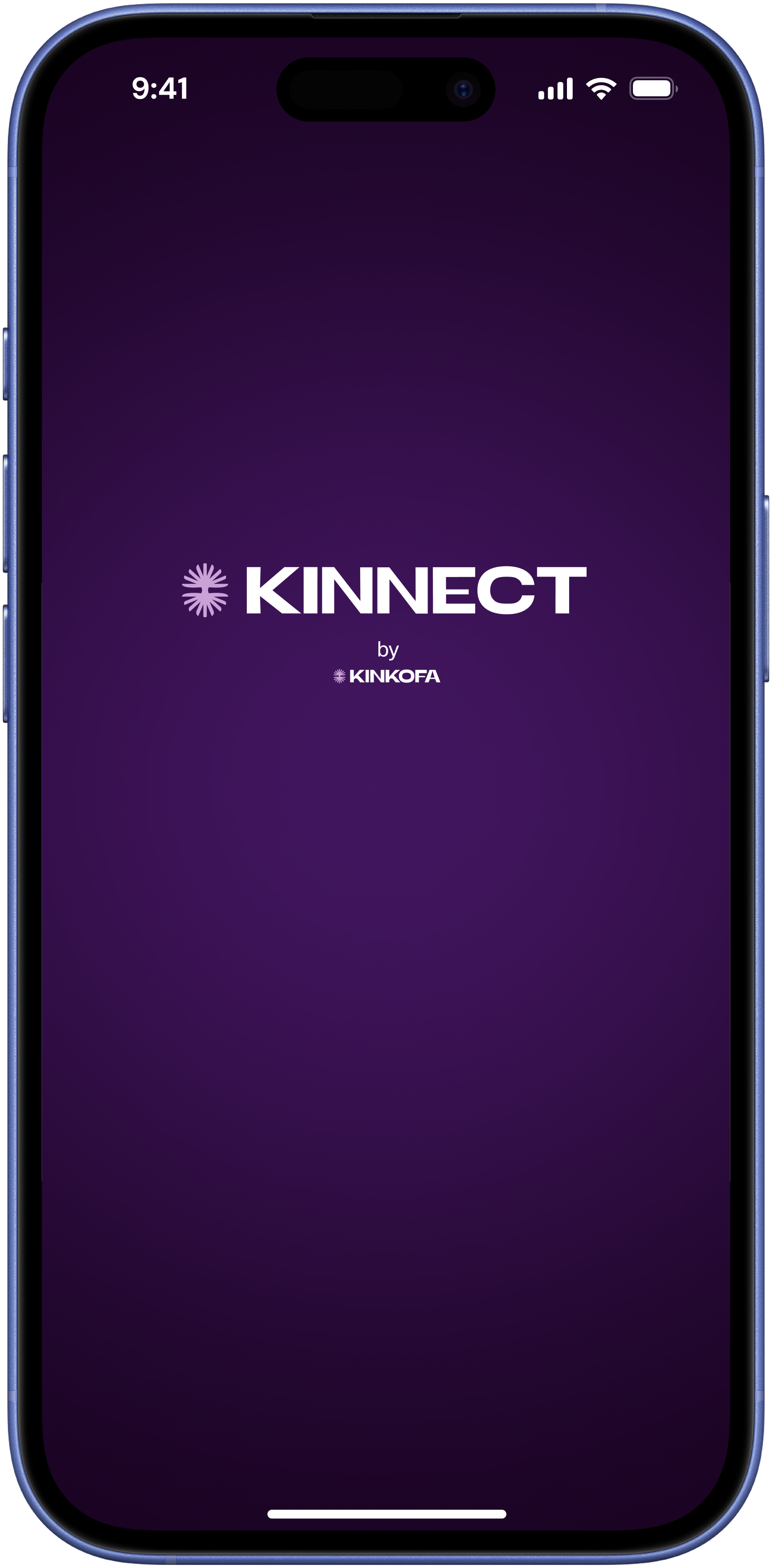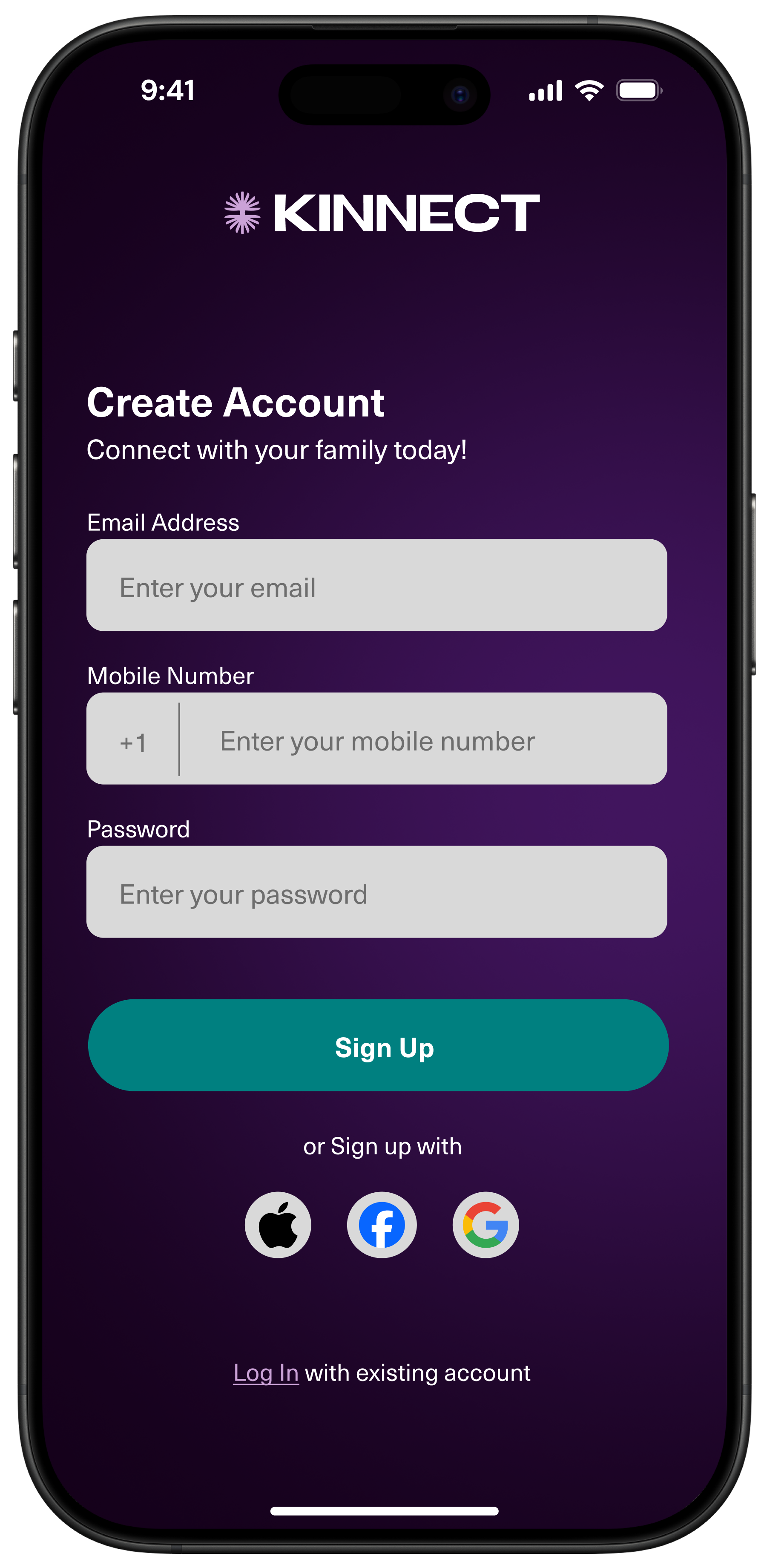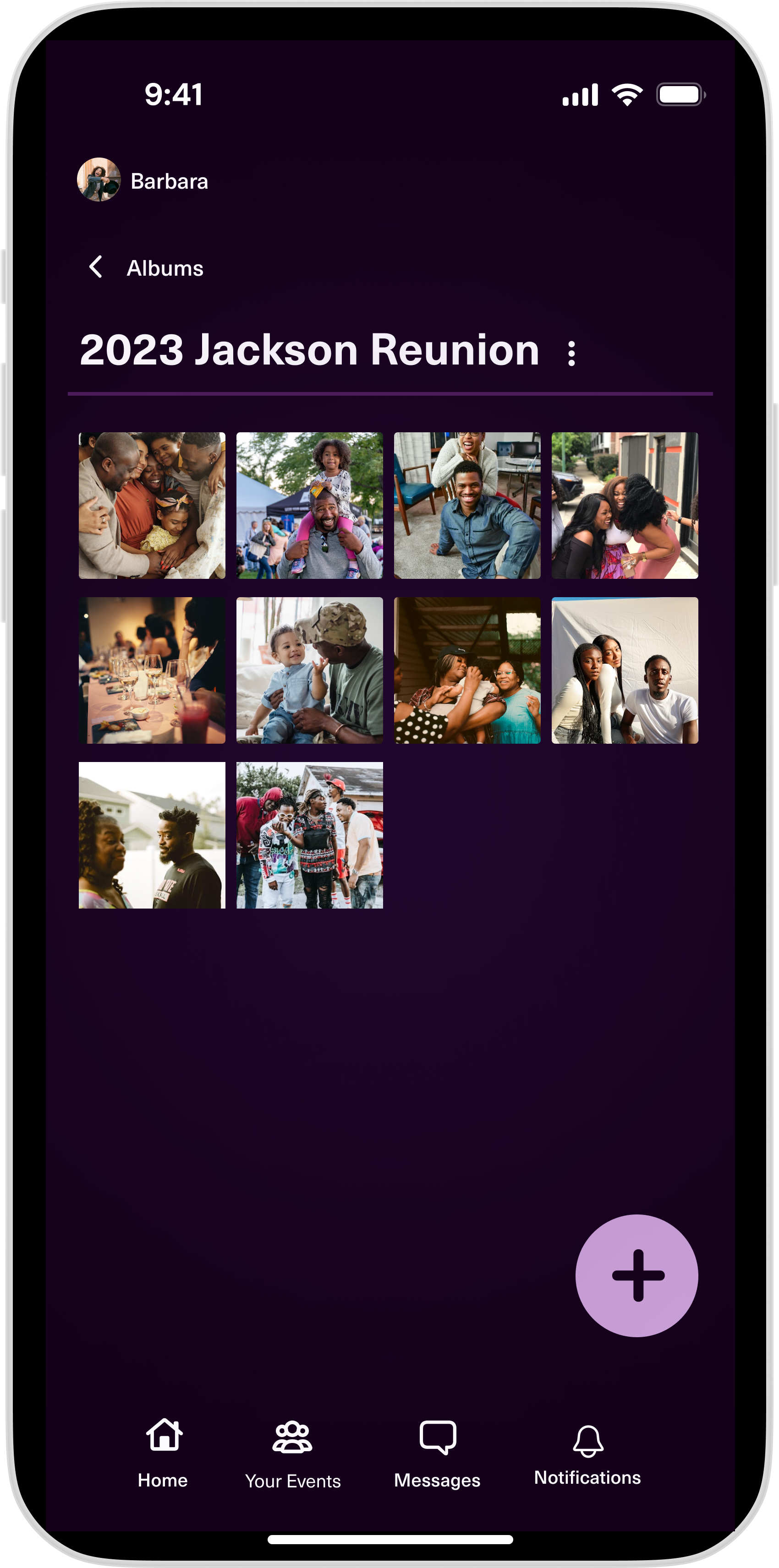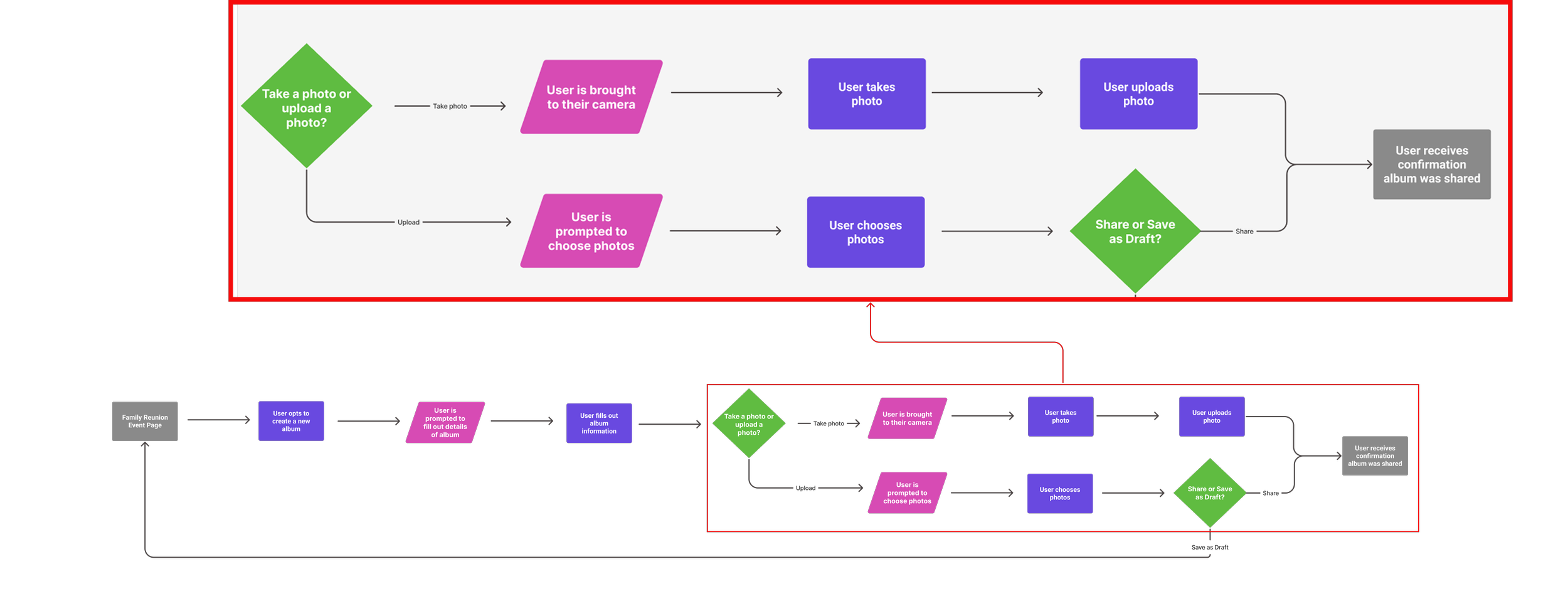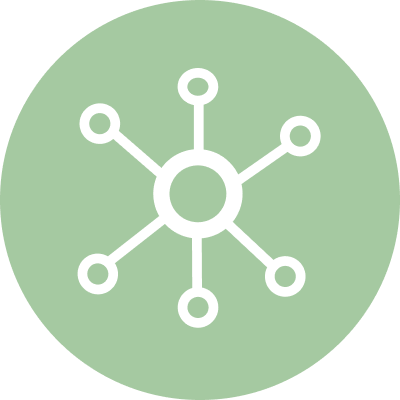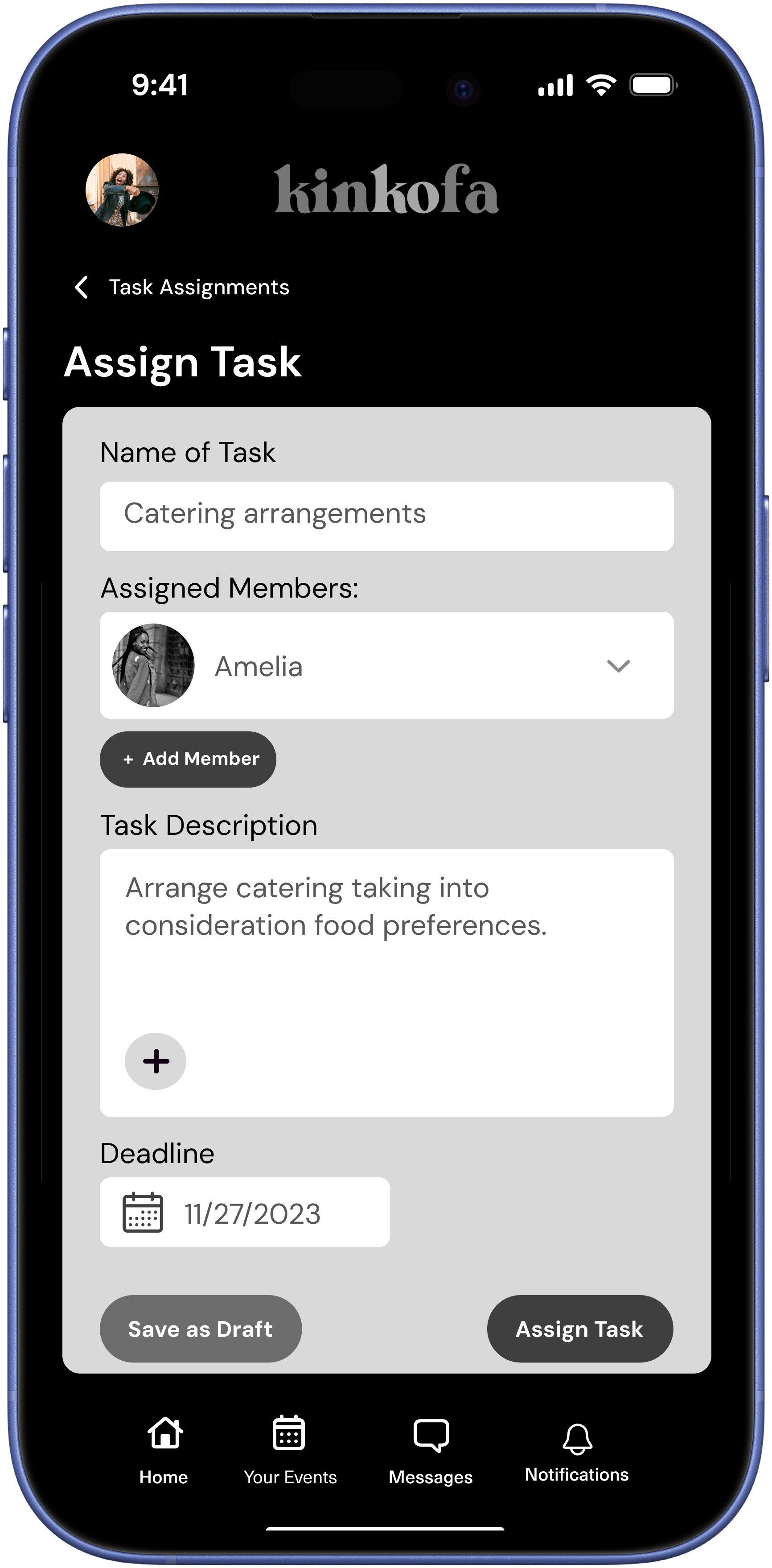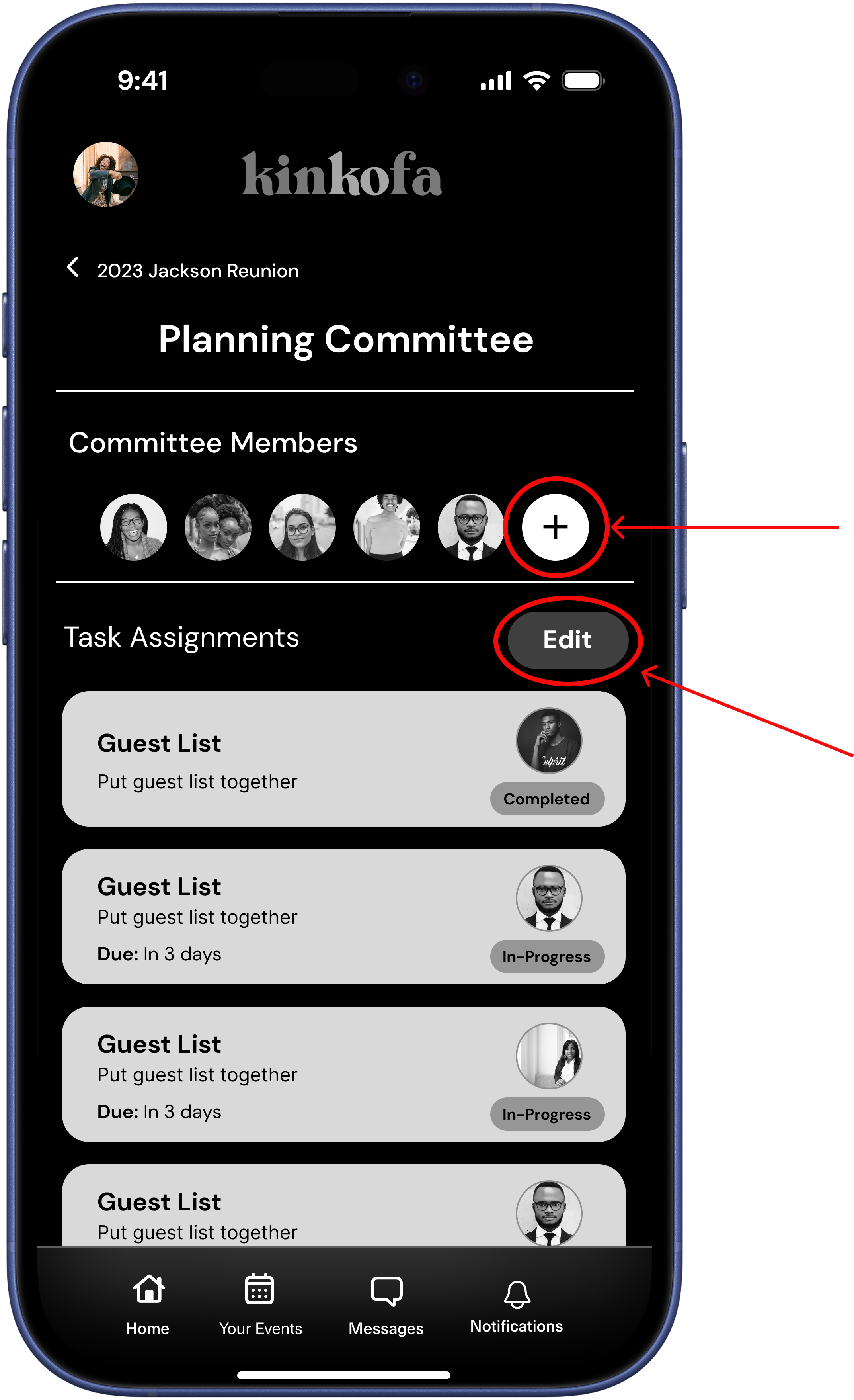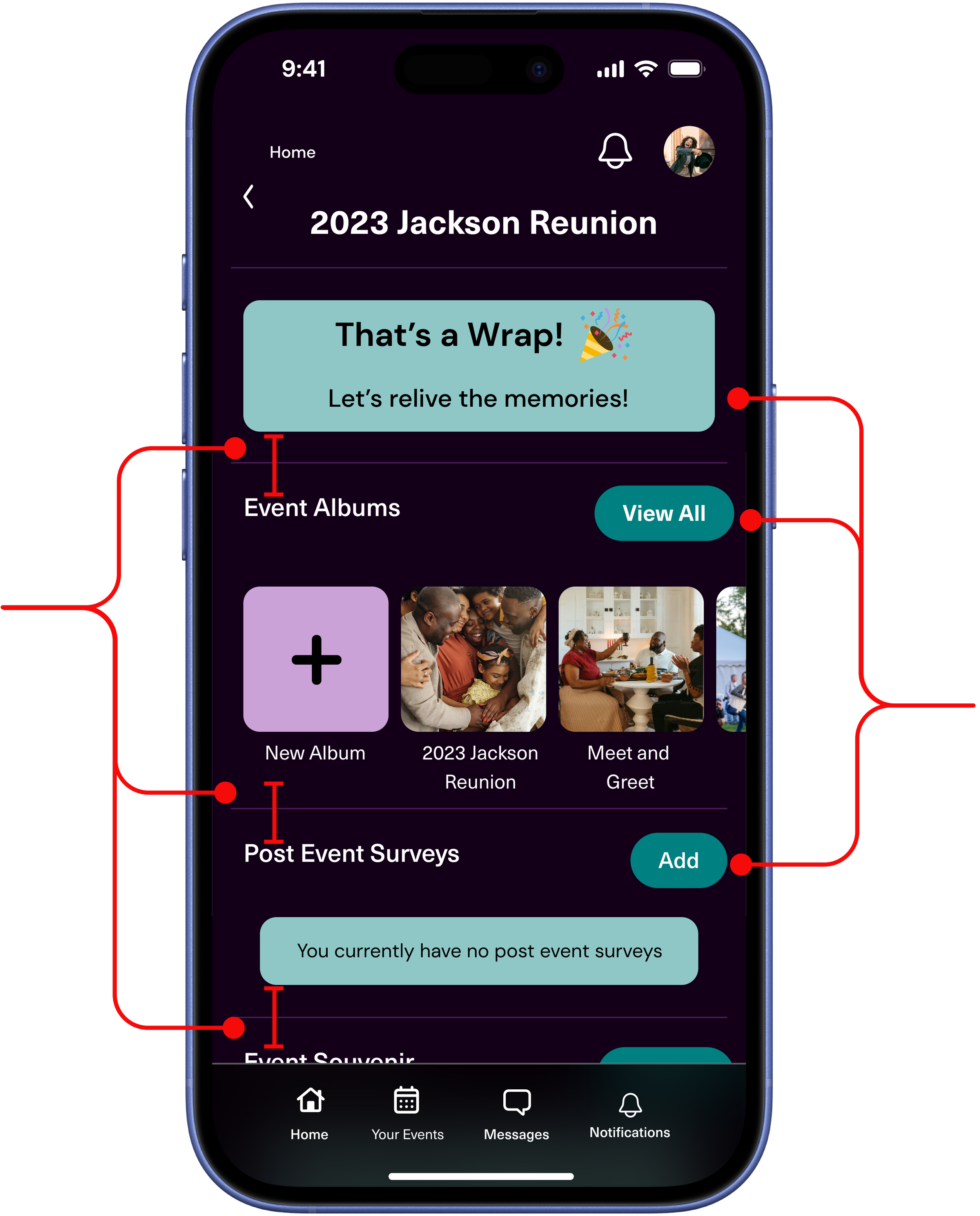User Research and Mobile Product Design to Support Family Reunion Planning on Kinkofa’s Kinnect App
Project Summary: Designed a 3-week MVP app that helps Kinkofa engage younger generations in planning Black family reunions through intuitive, collaborative tools.
Responsibilities: Qualitative Research, Experience Design, Prototype & usability testing
Timeline & Team: 3 weeks start to finish with 4 person fully remote team
Key Outcomes: Led to the creation of an MVP app that helped Kinkofa engage younger users in planning family reunions
COMPANY OVERVIEWKinkofa is the only digital family history platform for Black individuals to explore genealogy, discover connections, and preserve oral histories
Black descended individuals: For those seeking to uncover and preserve family legacies lost through emancipation, diaspora, and other historical disruptions.
Family Storytellers: Digitizing family archives to help storytellers preserve and share history across generations.
Private Institutions: Partners with GLAM institutions to curate African American stories and build community archives.
COMPANY OVERVIEWKinkofa aimed to preserve cultural traditions and empower younger generations by making Black family reunion planning simpler and more inclusive
Drive subscriber growth and engagement in Kinkofa’s broader offerings
Simplify event coordination burden for the planners
Motivate younger generations to contribute and carry on reunion traditions
By involving younger family members in the planning process, Kinkofa wanted to achieve the following:
Kinnect was a concept prototype driven by user demand and created to help Kinkofa explore future product opportunities
RESEARCHI conducted generative research to understand the cultural significance of Black family reunions, including user interviews across generations to uncover expectations and needs specific to the planning experience.
Historical Importance
BACKGROUND
Family reunions have roots in the post-Emancipation era, when formerly enslaved people began searching for lost or separated relatives.
By the 1970s, Black family reunions became more formalized, often including itineraries, planning committees, and family trees.
Who are planners?
USER IV SYNTHESIS
They are receptive to feedback on the events they planned.
They are strategic about logistics & always keep attendee experience in mind.
Planners are organized but also like to delegate tasks because they take on too many responsibilities.
User Interview
SAMPLE QUESTIONS
How do large social/family gatherings impact the relationship with your family?
What are the biggest challenges you face as a planner?
What are things you consider when planning a larger event?
RESEARCHOur user interviews confirmed that while planners carried most of the coordination burden, involving younger generations and designing for ease of use across age groups would be critical to Kinnect’s success.
User interviews revealed that main family planners are often seen as the dependable ones. While this responsibility is a source of pride, it also brings significant burdens and challenges.
Planners do more than just plan the event - they pass down history
Planners struggle to manage logistics for large family reunions.
The heavy workload discourages volunteers.
If planning remains difficult, the tradition is at risk.
The biggest challenge is finding a way to get future generations invovled
“It breaks my heart to see the younger generation drifting away from a tradition that’s been part of our family for so long. I won’t be able to plan these forever — we need a tool that makes them want to step up.”
Quote from a Kinkofa user during user interviews
RESEARCHAfter learning about the cultural significance of Black family reunions and modern planning needs, I conducted a C&C analysis to explore how existing event platforms support large-scale event planning, with a focus on logistics and fostering connection.
Logistics:
How platforms support practical planning needs like hotel accommodations, destination coordination, and food preferences.
Connection:
How platforms foster emotional or social connection through features like tagging, shared memories, or integrations with social media
RESEARCHTo inform Kinnect’s mobile experience, I evaluated how existing apps tackled event logistics, from guest management to scheduling, and identify the patterns that support event planning on the go.
In studying Eventbrite, Eventcreate, and Reunacy, I uncovered several insights that shaped how Kinnect could streamline event logistics.
Core features that enable coordination across large family groups
Mobile-first strategies for streamlining planning logistics
Tools that support task delegation, tracking, and completion among multiple users
First draft of C+C Analysis
RESEARCHTo explore how Kinnect could foster connection beyond logistics, I analyzed platforms outside of event planning that support collaboration and storytelling at scale
Although not designed for reunions or event planning, these platforms (Meta, Splitwise, and Zola) demonstrated social features that help users feel seen, contribute meaningfully, and stay engaged — and it worked across generations.
Private Groups
Shared message boards and private groups that encourage user engagement
Tagging & Memory Sharing
Tagging and memory sharing to highlight memorable interactions and moments amongst users
RESEARCHThe C&C Analysis showed that most event platforms emphasize logistics, leaving Kinnect the opportunity to stand apart by weaving in the social features that drive connection
The Kinnect solution would focus on:
Simplifying event planning
Honoring the emotional and cultural weight of black family reunions
Users posting memories on Meta Events
EXPERIENCE DESIGNEquipped with a deeper cultural understanding of Black family reunions, we created a journey map to uncover where support is most needed, revealing Kinnect’s opportunity to blend task focused strengths with the social features that foster connection
EXPERIENCE DESIGNBecause planners often feel stressed when carrying the burden alone, we turned these emotional moments into “How Might We” questions to surface opportunities and spark solution ideas
How might we guide new planners through the process so they feel capable, not overwhelmed?
How might we turn planning into a shared experience instead of a solo responsibility?
How might we make it easy for everyone to contribute to reunion plans and traditions?
EXPERIENCE DESIGNWith no existing flows to build from, Kinnect gave us the opportunity to address friction early, so we used our “How Might We” ideas to shape prospective user flows that prioritized clarity, contribution, and culturally meaningful planning
Identify friction points
Defined core paths from a user’s perspective
Informed which screens and interactions were essential to support planners
Successful MVP!
EXPERIENCE DESIGNWe mapped prospective user flows from planners’ challenges to envision how Kinnect could make tasks approachable, collaborative, and culturally meaningful while supporting multi-generational engagement
Assigning tasks to planning committee members: Designing a straightforward flow to delegate responsibilities and reduce coordination friction.
Inviting family members to join Kinnect: Streamlining the onboarding process to encourage broader participation.
Creating and sharing photo albums: Encouraging family connection through shared memories and collaborative event content.
PRODUCT STRATEGYThrough user interviews, C&C analysis, journey mapping, and prospective user flows, we narrowed our MVP focus while staying grounded in preserving meaningful cultural tradition
Design features that lower the effort of delegation and empower others to participate.
Centralize planning tools to make delegation easier
Design enjoyable social touch points to drive participation.
Balance practical planning logistics with the cultural significance of the reunion experience.
EXPERIENCE DESIGNThe ideas we generated during low-fidelity prototyping helped shape MVP features that prioritized intuitive experiences while honoring the cultural importance of reunion planning
Event setup and planning coordination
Assigning roles and delegating tasks in planning committees
Engaging youth by creating & sharing albums
EXPERIENCE DESIGNThe mid-fidelity phase helped us translate our low-fidelity direction into clear, testable flows, focusing on refining layout, content hierarchy, and key interactions and functionalities without the distraction of visual polish
Designing in mid-fidelity helped focus experiences where:
Certain experiences needed more guidance
Where interactions felt natural versus clunky
Where participation felt easy and inviting for users
PROTOTYPE, TEST, & ITERATE
Mid-fidelity testing helped us evaluate how well our prototype supported core interactions and usability goals
Allowed us to observe real-time reactions and gather in-the-moment feedback
Enabled follow-up questions to clarify user behavior and decision-making
Helped us evaluate task completion and uncover usability friction
Included users with varying tech comfort levels to surface a wide range of needs
Why moderated testing?
PROTOTYPE, TEST, & ITERATE
Our first usability test showed that while users could successfully add members and assign tasks with minimal guidance, clarity and navigation issues emerged that revealed opportunities for refinement
Adding text to icons and clarifying button language to ensure users were selecting correct actions
Users were confused about multiple CTA placements, delaying task completion
PROTOTYPE, TEST, & ITERATE
Our second usability test validated key improvements as users successfully completed updated photo sharing flows, while also uncovering opportunities to refine layout clarity and content hierarchy
Recommendations included revising content hierarchy and increasing visual separation for CTA’s since everything blended together with similar weight
Some users struggled with dense content and visual spacing between elements and
Most importantly: Some users expressed concern that dense content could make participation harder for older generations.
OUTCOMESWhat began as an unfamiliar and intimidating space became an opportunity, led by curiosity and empathy, to design a meaningful MVP rooted in real user needs.
Cross-Generational Engagement: Features like photo uploads and a social event page helped stakeholders see how Kinnect could drive participation across generations
Potential Engagement Growth: Stakeholders also saw the MVP as a pathway to grow their user base and expand engagement on the platform.
Set Kinkofa Apart From Competition: The focus on culture and collaboration positioned Kinnect as a key differentiator from tools like Eventbrite
Reframed Stakeholder Expectations: Stakeholders realized throughout our process that their users needed more than just help with even logistics but a tool that also fosters connection and cultural continuity
LESSONSCuriosity and research transformed challenges into opportunities for deeper insights and more inclusive design.
Curiosity and empathy are powerful design tools: Designing for unfamiliar spaces requires a willingness to listen and learn. Staying curious and empathetic helped me understand user motivations and design with cultural context in mind
Asking open-ended questions leads to unexpected insights: User research is most effective when it uncovers the “why” behind behaviors. Open-ended questioning surfaced surprising pain points and reframed assumptions throughout the project
Advocating for research-backed decisions adds value: Even when stakeholders are confident in their direction, it’s important to represent user needs. Grounding design decisions in data allowed me to advocate for more inclusive and effective solutions.
NEXT STEPSAlthough I wasn’t involved in development and launch, I would have tracked key metrics to evaluate Kinnect’s success and ensure the product delivered meaningful impact
Kinnect as an entry point to the platform: Measure how many new users were introduced to Kinkofa by starting with Kinnect.
Growth through party planning invites: Track the virality loop, focusing on how often users invite others to join the planning committee or view shared reunion content like photos.
Assess engagement with Kinnect: Track which features are used most frequently to understand what’s resonating and whether core functionality is meeting user needs.
Confirm retention: Measure long-term value by tracking whether families return to Kinnect for future reunions.
Determine demographic engagement: Since multigenerational connection is a goal, tracking engagement by age group (if available) could help validate the cultural + usability impact.


